Georges Mathieu
Georges Mathieu was born in Boulogne-sur-Mer, France, in 1921. A self-taught painter and a theorist, he began his artistic career in 1942. He travelled and painted in Japan, in the USA, in Brazil, Argentina and Middle-East but mostly lived and worked in the Paris region, France where he died in 2012.
Georges Mathieu is credited with launching the Lyrical Abstraction movement and the greater trend of Informalism in post-World War II Paris. Pioneering a form of gestural abstraction that was close to performance, Georges Mathieu, famed-provocateur, with his dazzling brilliance, developed a form of painting which prioritize the primacy of speed, denial of references, and ecstatic state of mind. Sometimes working in front of the cameras, his work exhibited throughout the world, he was famed for his large-scale formats, which he achieved by using long brushes and applying paint directly from tubes onto the canvas. The immediacy and rapid execution of these distinct methods guaranteed the freedom with which he defined his work. He brought a new brand of freedom to the creative gesture and gave birth to a brand new style, somewhere between esoteric sign, calligraphy and raw energy. The titles of his works, often steeped in historical, musical and geographical references, add a poetic quality, both sophisticated and offbeat.
Mathieu's work has been the subject of numerous retrospectives, and is in more than eighty museums and public permanent collections, including the Art Institute of Chicago; Centre Pompidou, Paris; the Hirshhorn Museum and Sculpture Garden, Washington, DC; Kunstmuseum Basel; Kunsthaus Zürich; the Museum of Contemporary Art, Los Angeles; the Museum of Fine Arts, Houston; the Museum of Modern Art, New York; the Musée National d'Art Moderne, Paris; the Solomon R. Guggenheim Museum, New York; and the Tate, London.

SELECTED WORKS
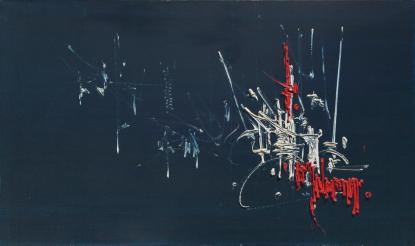
Georges Mathieu, Déformation de fonction variable convexe, 1957
Oil on canvas
97 x 162 cm | 38.2 x 63.8 in
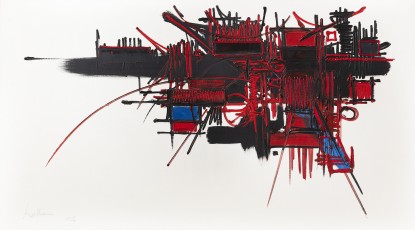
Georges Mathieu, Cardamine, 1964
Oil on canvas
73 x 130 cm | 28.7 x 51.2 in
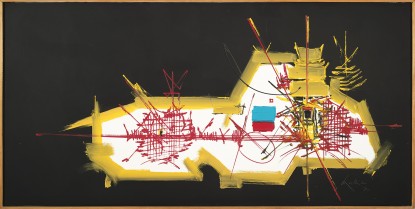
Georges Mathieu, Trigaudin, 1970
Oil on canvas
97 x 195 cm | 38.2 x 76.8 in

Georges Mathieu, Nantouillet II, 1986
Oil on canvas
60 x 180 cm | 23.6 x 70.9 in
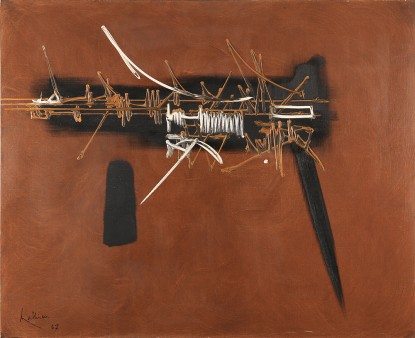
Georges Mathieu, Li Duan, 1967
Oil on canvas
81 x 101 cm | 31.9 x 39.4 in
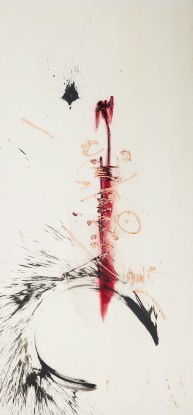
Georges Mathieu, Victoire de Navas de Tolosa, 1960
Oil on canvas
199,4 x 92,1 cm | 78.5 x 36.3 in
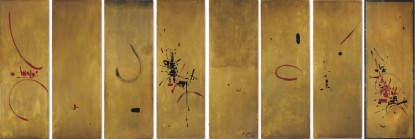
Georges Mathieu, Untitled, 1960
Oil on wood
174 x 480 cm | 68.5 x 189 in

Georges Mathieu, Denecourt, 1964
Oil on canvas
60 x 100 cm | 23.6 x 39.4 in

Georges Mathieu, Varennes, 1964
Oil on canvas
60 x 100 cm | 23.6 x 39.4 in
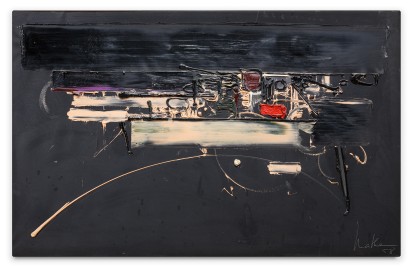
Georges Mathieu, Inana, 1958
Oil on canvas
81 x 150 cm | 31.9 x 59.1 in
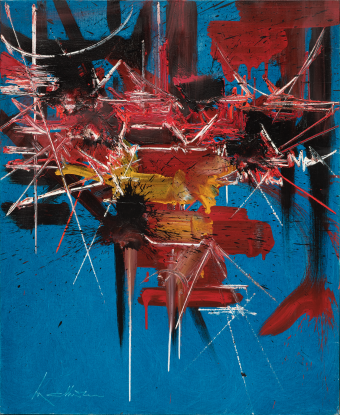
Georges Mathieu, Vieil azur, 1987
Oil on canvas
92 x 73 cm | 36.2 x 28.7 in

Georges Mathieu, Le Fort Gaston tombe en la puissance du Roy d'Arménie obligé de le restituer aux Templiers, 1960
Oil on canvas
114,5 x 185 cm | 45.1 x 72.8 in
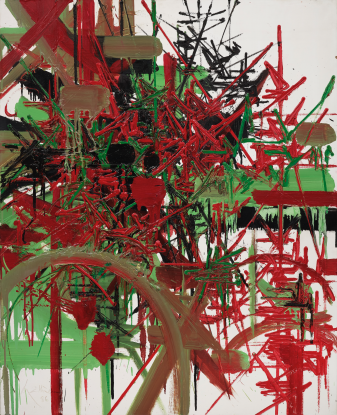
Georges Mathieu, Voix plaintives, 1986
Oil on canvas
101 x 84 cm | 39.8 x 33.1 in